Spanning over 7,000 years—from the Bronze Age dockyards of Lothal (~2400 BCE) to the advanced stitched ships of Cholas and Beypore, this article uncovers India’s lost maritime genius. Indian maritime and ship-building technology, which was suppressed by colonial acts of the British, is now experiencing a revival with the 2025 introduction of stitched shipbuilding through INSV Koundinya. This exploration delves into the forgotten history of ship-building in India.
Table of Contents
- Introduction
- Archaeological Evidence of Navigation
- Ancient Scriptures on Shipbuilding
- Ancient Techniques of Shipbuilding
- India’s Maritime History in the Pre-Colonial Era
- The Decline of Indian Shipbuilding Heritage
- The Revival of Indian Maritime Heritage
- Stitch Ships: A Unique Indian Craft
- Conclusion
- FAQs
Introduction
The story of ship-building in India is not just a tale of wooden vessels but a profound narrative that encapsulates human ingenuity, resilience, and the evolution of civilization. The journey begins with one of the oldest known boats, the Passy Canoy, which is housed in the Drents Museum in the Netherlands. This canoe, dating back over ten thousand years to around 8040 BC, serves as a testament to humanity’s early navigation skills. It’s a hollowed-out log, simple yet profound, illustrating that even in the Stone Age, humans were adept at navigating waterways for fishing, travel, and survival.
As we explore the rich maritime heritage of India, it’s crucial to recognize that this narrative is not about claiming superiority or asserting that India has the greatest maritime history. Instead, we aim to uncover the truth and present the facts as they are. In this article, we will cover five key topics:
- Archaeological evidence of navigation
- Ancient scriptures on shipbuilding
- Ancient techniques of shipbuilding
- India’s maritime history in the pre-colonial era
- The decline of Indian shipbuilding heritage
Archaeological Evidence of Navigation
India’s maritime history is deeply rooted in its archaeological findings. One of the oldest archaeological discoveries is a dugout canoe found at Pattanam, Kerala, which dates back to approximately 36 BC to 24 AD. This canoe is a solid log of wood, carefully hollowed out and shaped to achieve the right buoyancy and balance, primarily used for fishing and transport.
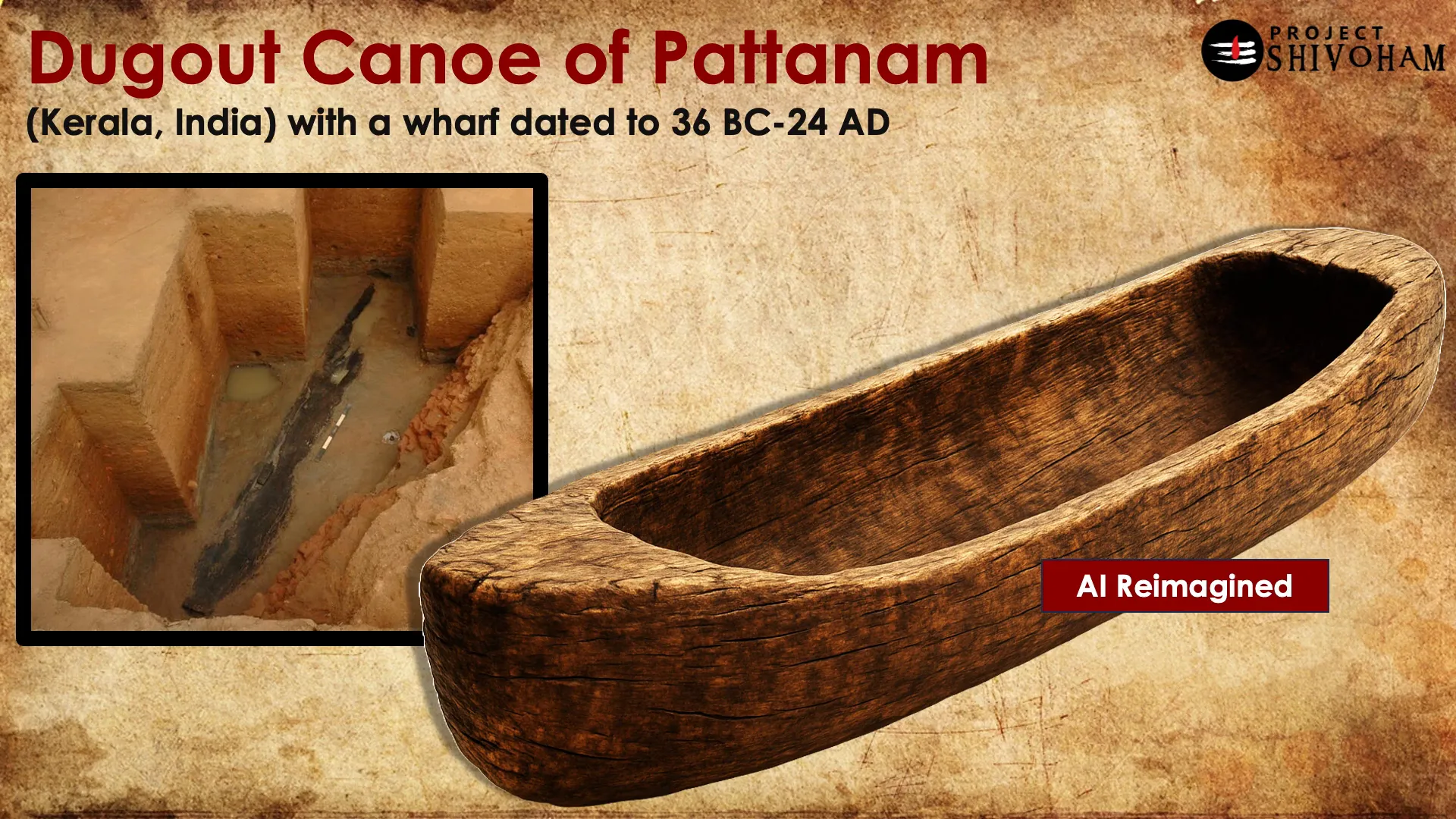
In addition to the Pattanam canoe, another significant find is the Karakarapalli boat, also in Kerala, dated between 1200 and 1500 BCE. This type of boat was likely used for longer journeys and trade, showcasing the advanced navigation skills of ancient Indians.
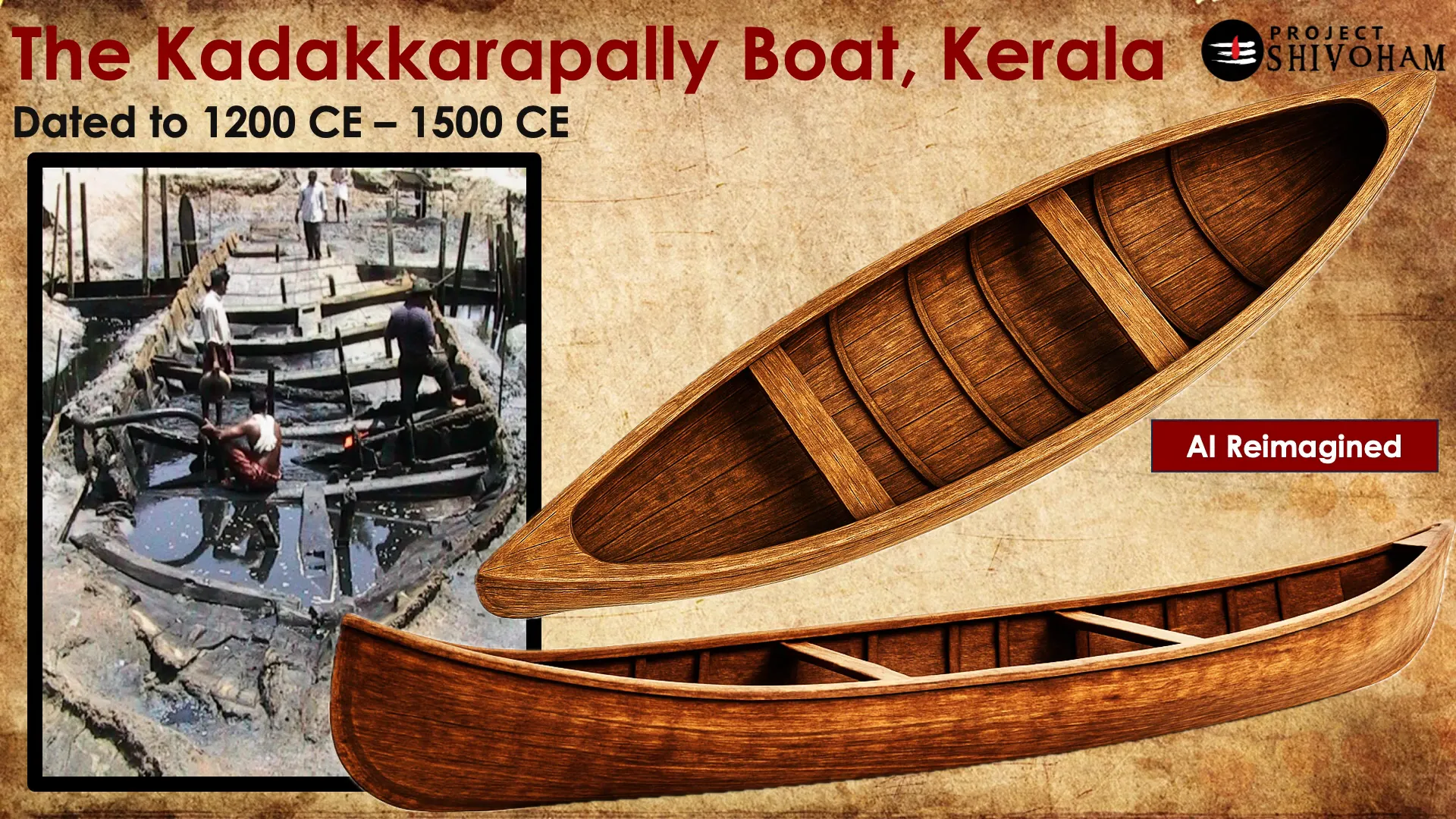
Another remarkable find is the dugout canoe of Kottayam, Kerala, dated to around 1500 CE. These vessels were mostly used for riverine activities like fishing and transportation. Interestingly, the modern-day kayak draws inspiration from these ancient dugout canoes.
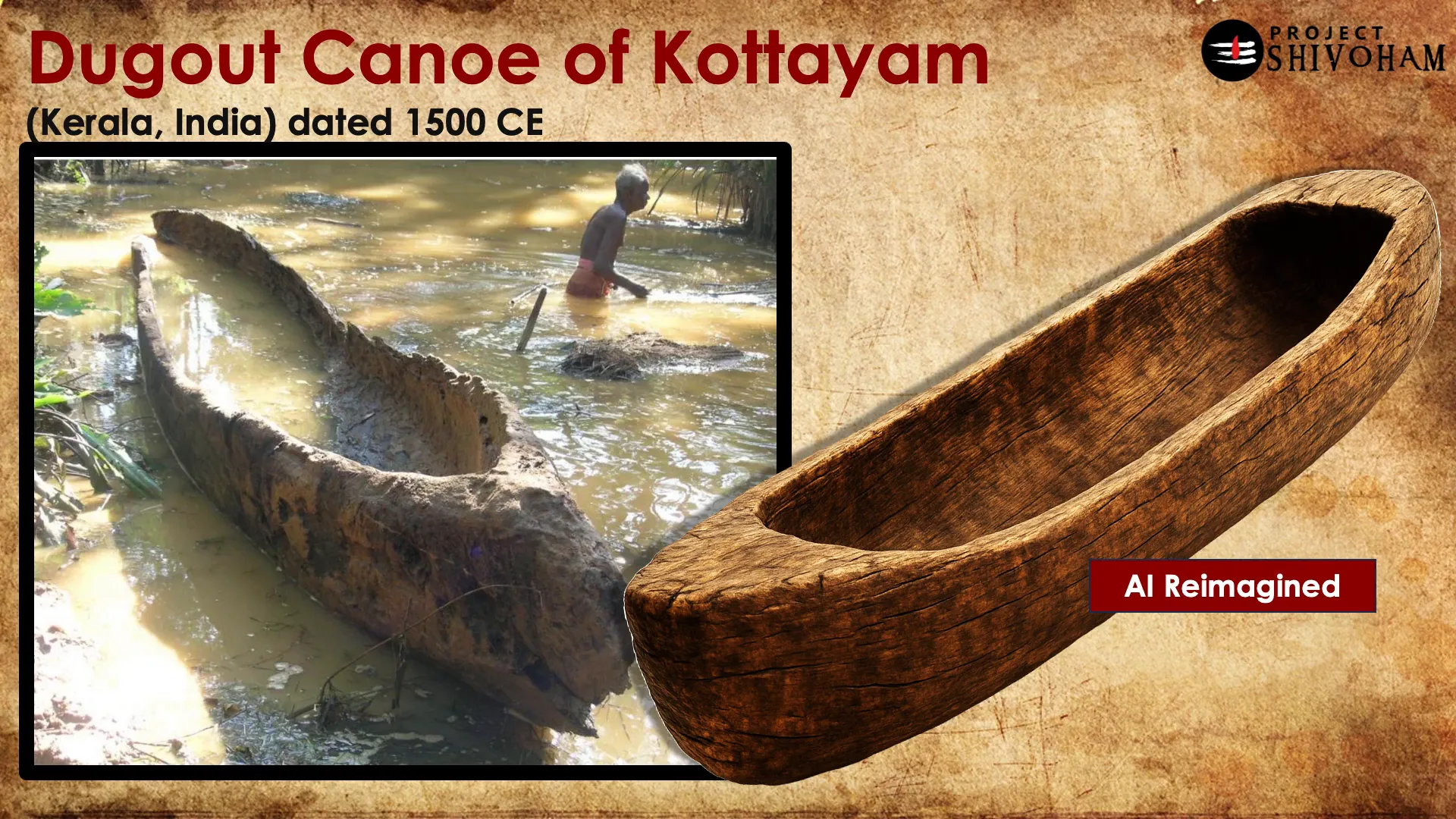
The Uru, or fat boat, from Beipur in Kerala is a living tradition rather than an archaeological relic. Handcrafted without modern blueprints, this vessel has been made for over two thousand years, reflecting the ancestral memory and oral knowledge passed down through generations. It was highly sought after by Arab traders for its strength and seaworthiness.
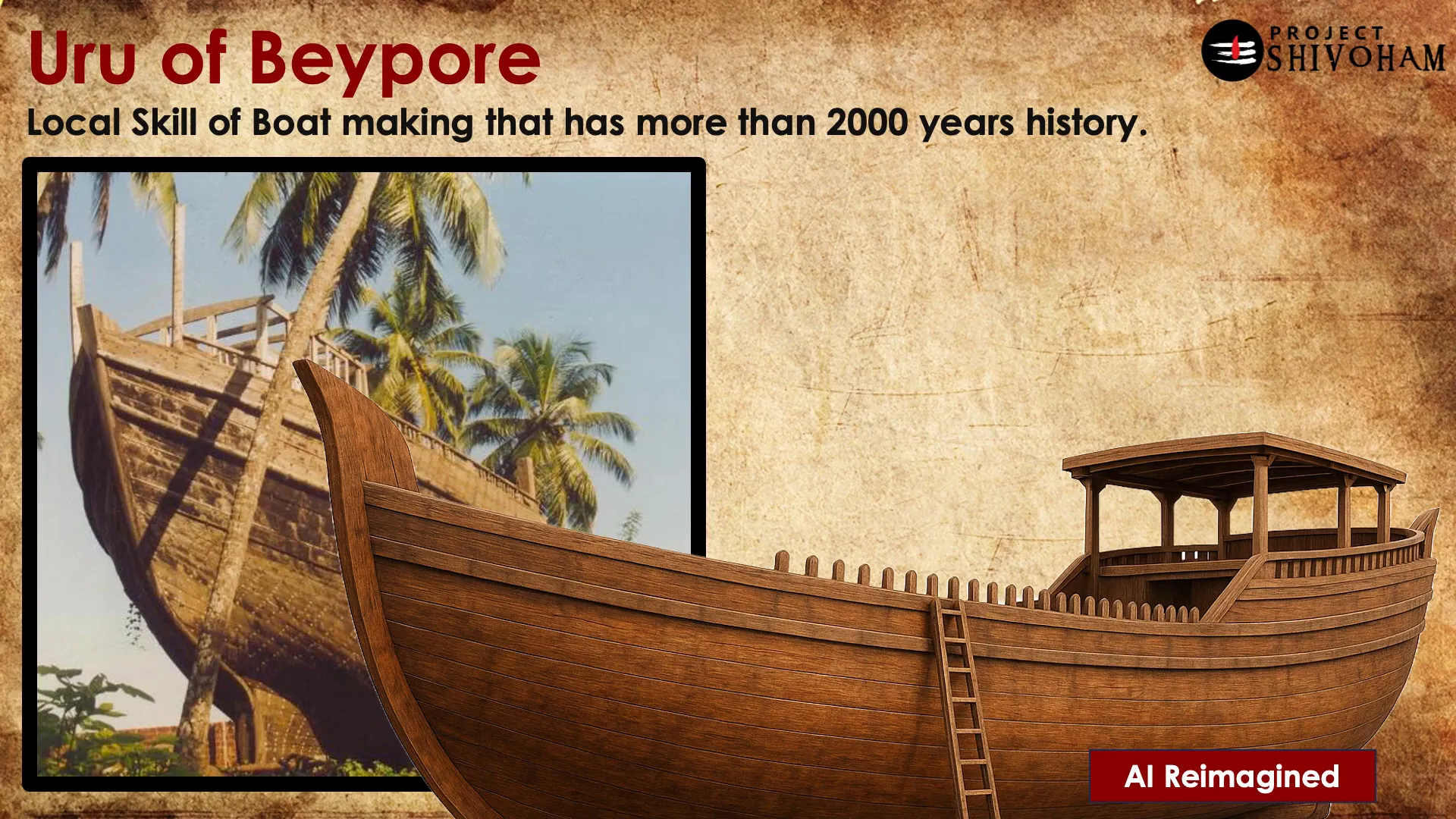
Moving forward, the Lothal Dockyard in Gujarat, dated around 2400 to 1900 BCE, is one of the most remarkable sites of the Indus Valley Civilization. Discovered in 1954, it is considered the oldest tidal dockyard in the world, showcasing advanced knowledge of hydraulics and engineering.

Ancient Scriptures on Shipbuilding
While archaeological findings provide tangible evidence, ancient scriptures offer insights into the conceptual understanding of navigation and shipbuilding. These scriptures can be categorized into two main types: scientific and technological, and literary or philosophical.
The scientific scriptures provide details on ship types, keel design, star navigation, and crew roles. Notable texts include:
- Yuktikalpa Daru: Discusses ship types, keel design, star navigation, and crew roles.
- Samarangana Sutradhara: Covers sacred geometry, materials, ship layout, and vast principles.
- Arthashastra: Discusses the establishment of naval ports, tolls, shipping officers, and maritime regulations.
- Brihat Samhita: Focuses on astrological timing, wind charts, and sea voyage planning.
- Kapal Satyiram: An ancient Tamil scripture that details ship design, material selection, and assembly techniques.
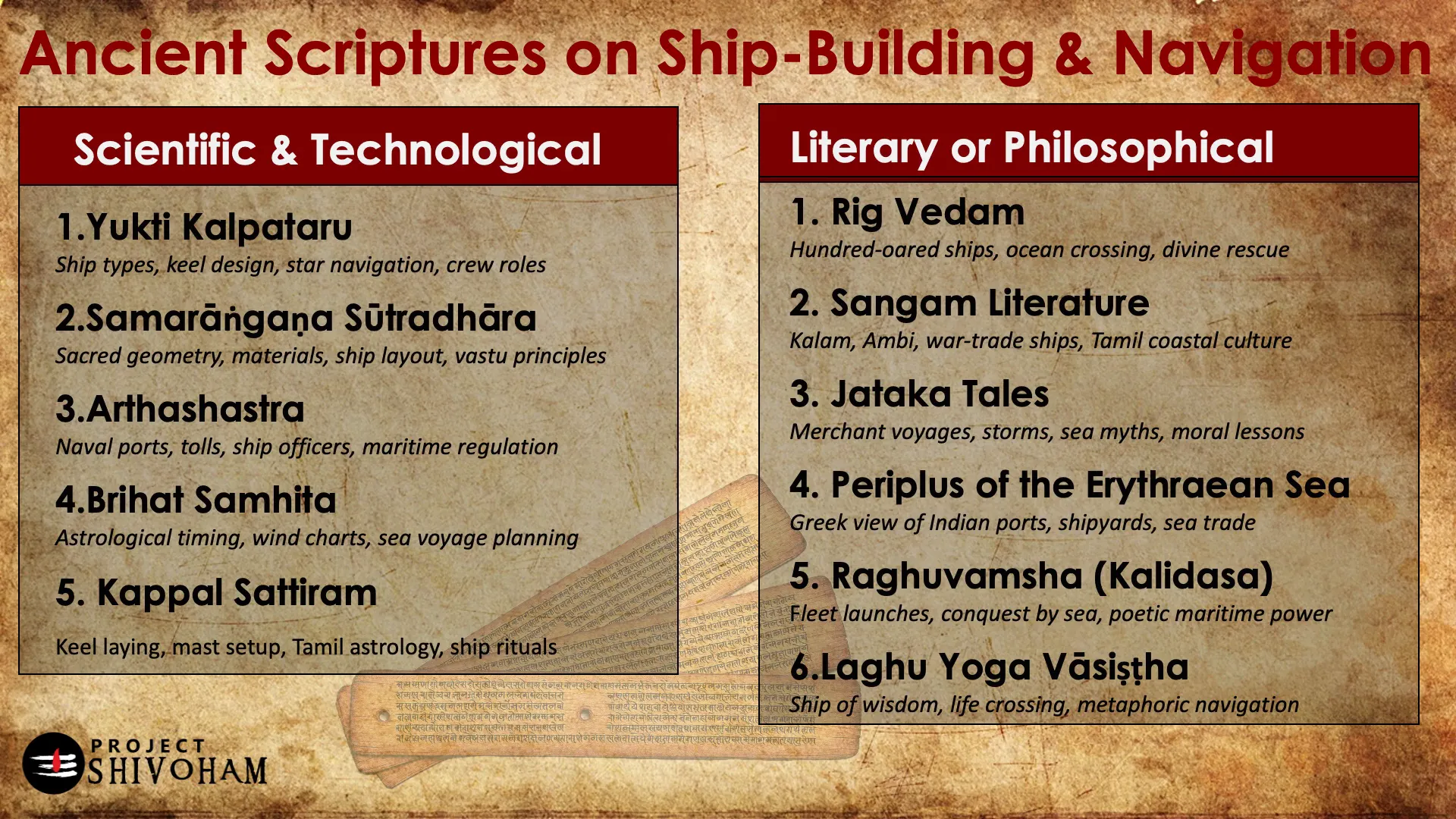
The literary scriptures provide a broader cultural context, illustrating how navigation was interwoven into daily life. Important texts include:
- Rigveda
- Sangam Literature
- Jataka Tales
- Periplus of the Erythraean Sea
- Raghuvamsha of Kalidasa
Ancient Techniques of Shipbuilding
Understanding the ancient techniques of shipbuilding reveals the collective memory of civilizational knowledge. The Yuktikalpataru, an extensive encyclopedia, dedicates sections to the knowledge of navigation, including the principles of ship construction and guidelines for choosing the right wood.
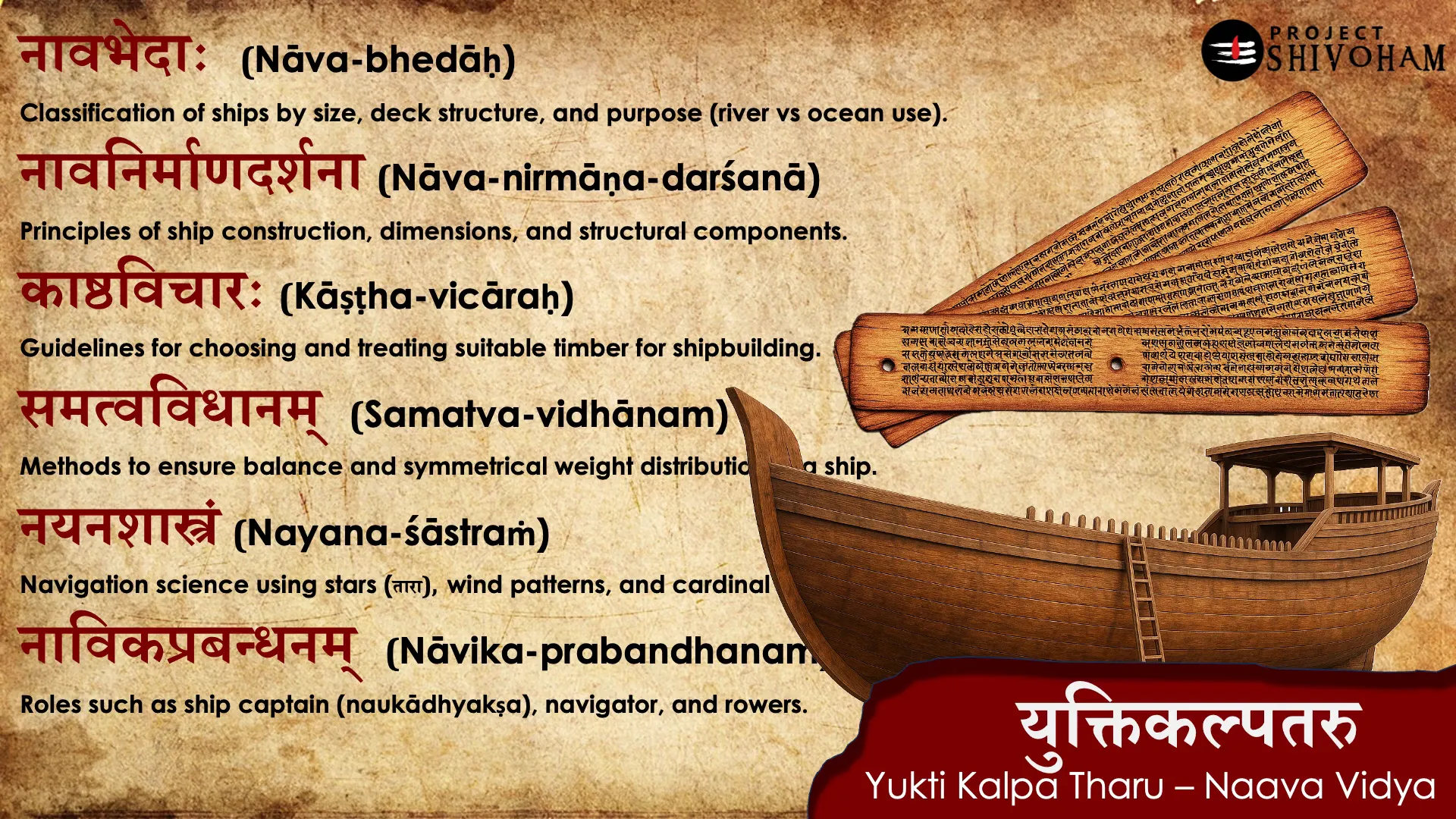
Technological advancements included the construction of double-decked ships, which were capable of carrying significant loads. The importance of balance and weight distribution was crucial for the vessel’s performance.
Wood treatment was another vital aspect. The ancient texts indicate that wood should be soaked and treated with fish oil to enhance durability. This knowledge reflects a sophisticated understanding of materials and engineering principles that have been largely forgotten.
India’s Maritime History in the Pre-Colonial Era
The Chola dynasty stands out as one of the greatest maritime powers in Indian history. Their naval legacy peaked during the reign of Rajaraja Chola I and Rajendra Chola I in the 10th and 11th centuries CE. They constructed ocean-class ships capable of long-distance trade and military expeditions, maintaining active trade routes with Southeast Asia, China, and the Arab world.
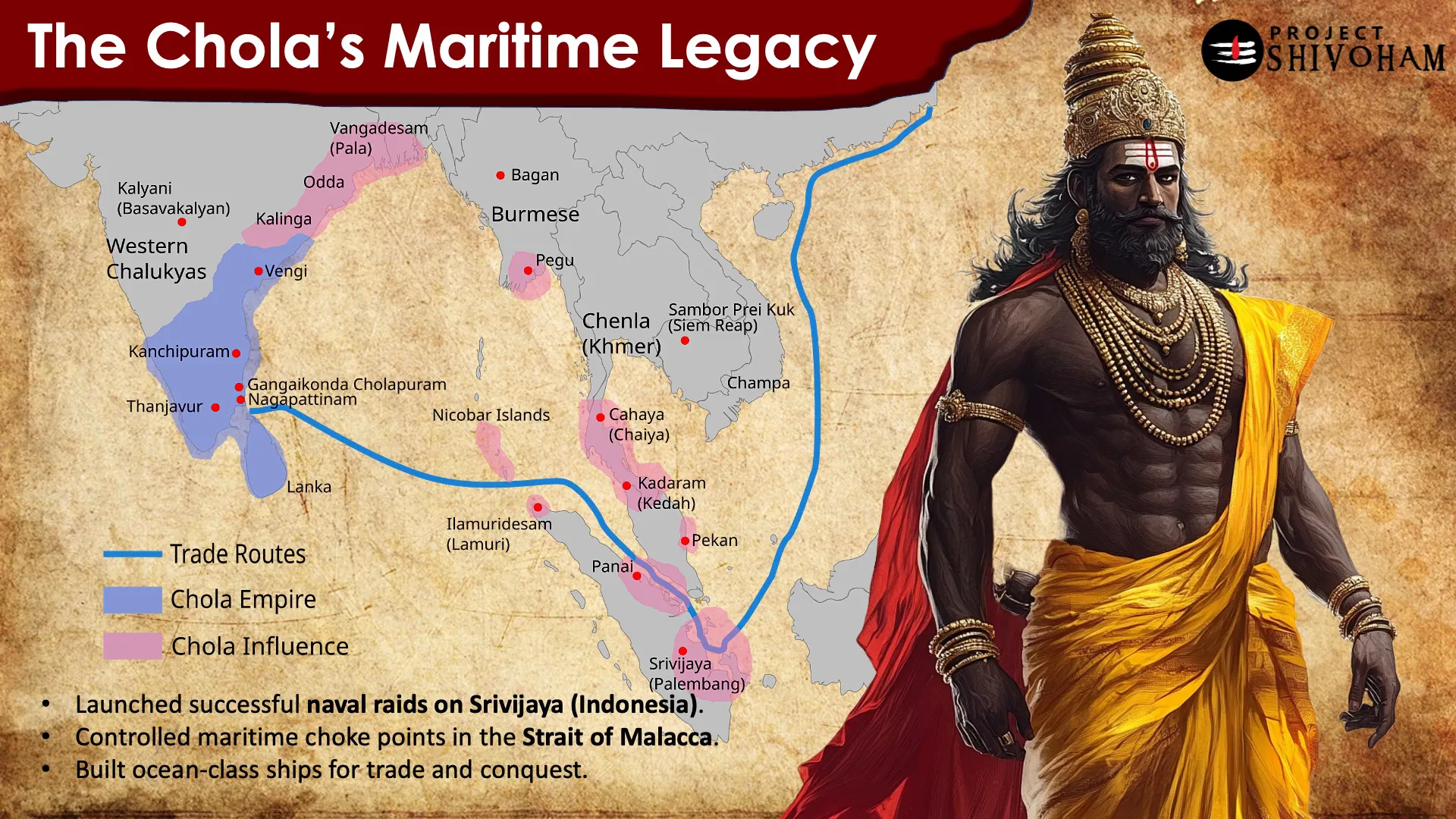
In 1025 CE, Rajendra Chola launched a massive naval expedition against the Srivijaya Empire, asserting dominance over key ports and controlling vital maritime choke points. Two significant centers during this period were Gangaikonda Cholhapuram, the imperial capital, and Nagapatnam, a crucial shipbuilding hub.
Shivaji Maharaj also made significant contributions to Indian maritime history. He was the first Indian ruler in the early modern period to institutionalize a naval force aimed at defending the Konkan coastline and securing maritime trade routes.
A lesser-known yet powerful story is the Battle of Sarai Ghat in 1671, which showcased the Ahom kingdom’s mastery of indigenous riverine warfare. This battle exemplified how localized maritime knowledge and strategic adaptation could overcome more powerful empires.
The Decline of Indian Shipbuilding Heritage
Despite its rich maritime history, Indian shipbuilding faced a significant decline during British colonial rule. For over two thousand years, India led in maritime innovation, yet this legacy was systematically dismantled through restrictive laws and unfair regulations. The British Navigation Acts and other policies crippled indigenous shipbuilding industries and erased traditional knowledge from education.
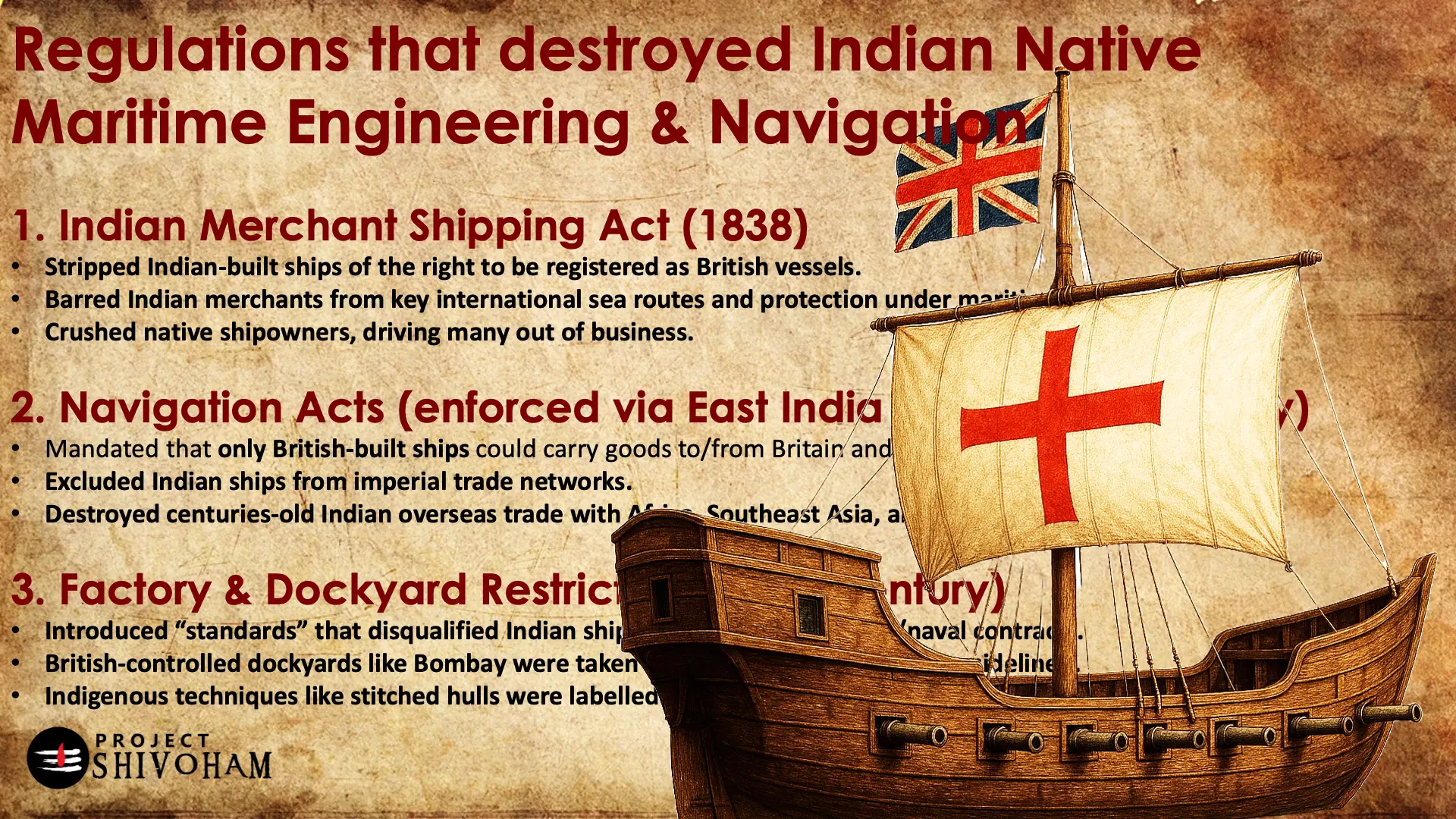
Maritime castes were demoted to servitude, and India’s centuries-old oceanic dominance was replaced with colonial dependency. This loss was not just a decline but a deliberate erasure of a thriving nautical civilization.
The Revival of Indian Maritime Heritage
On May 21, 2025, the Indian Navy inducted the Indian Naval Sailing Vessel (INSV) Kaundinya at the Karwar naval base in Karnataka. This vessel represents a significant revival of India’s ancient maritime heritage, constructed using traditional techniques without metal nails.
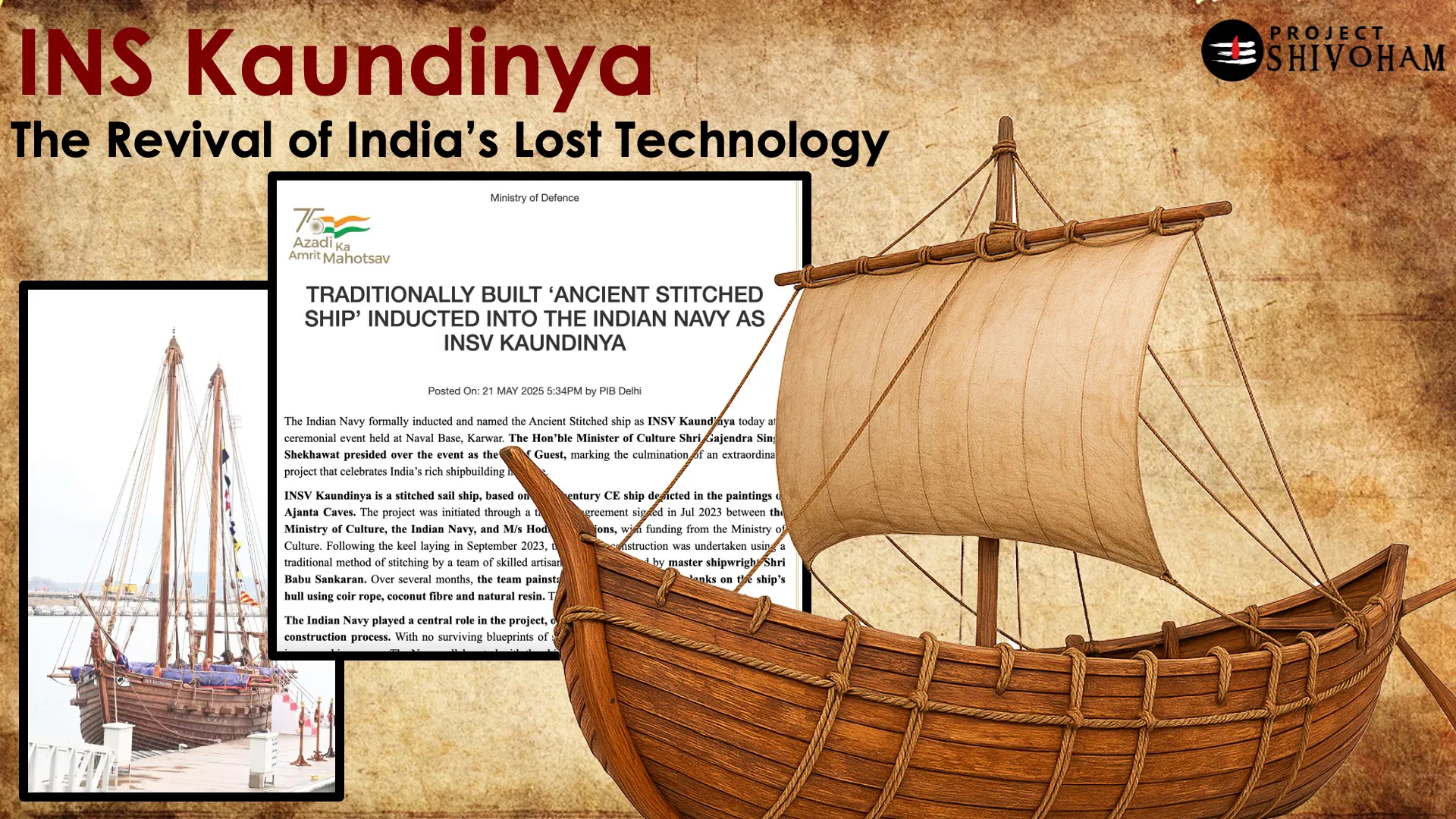
This unique vessel is inspired by the murals from the Ajanta caves and symbolizes India’s long-standing traditions of maritime exploration and cultural exchange. The ship is set to embark on a Transoceanic voyage along ancient trade routes, retracing historical paths and demonstrating the seaworthiness of traditional Indian shipbuilding techniques.
Stitch Ships: A Unique Indian Craft
Stitch ships are ancient vessels built without metal nails, binding wooden planks using coiled rope sealed with natural resin. This technique, which dates back over fifteen hundred years, allows for a flexible hull ideal for rough tropical seas. The stitched ships absorbed wave impact and were lightweight yet durable, requiring no dry docks and using renewable materials.
One of the oldest surviving indigenous watercrafts is the Kathumaram, which dates back over two thousand years. This vessel, built by binding logs with natural coir ropes, was designed for coastal fishing and near-shore navigation. The principle behind Kathumaram is similar to modern catamarans, which have been influenced by this ancient design.
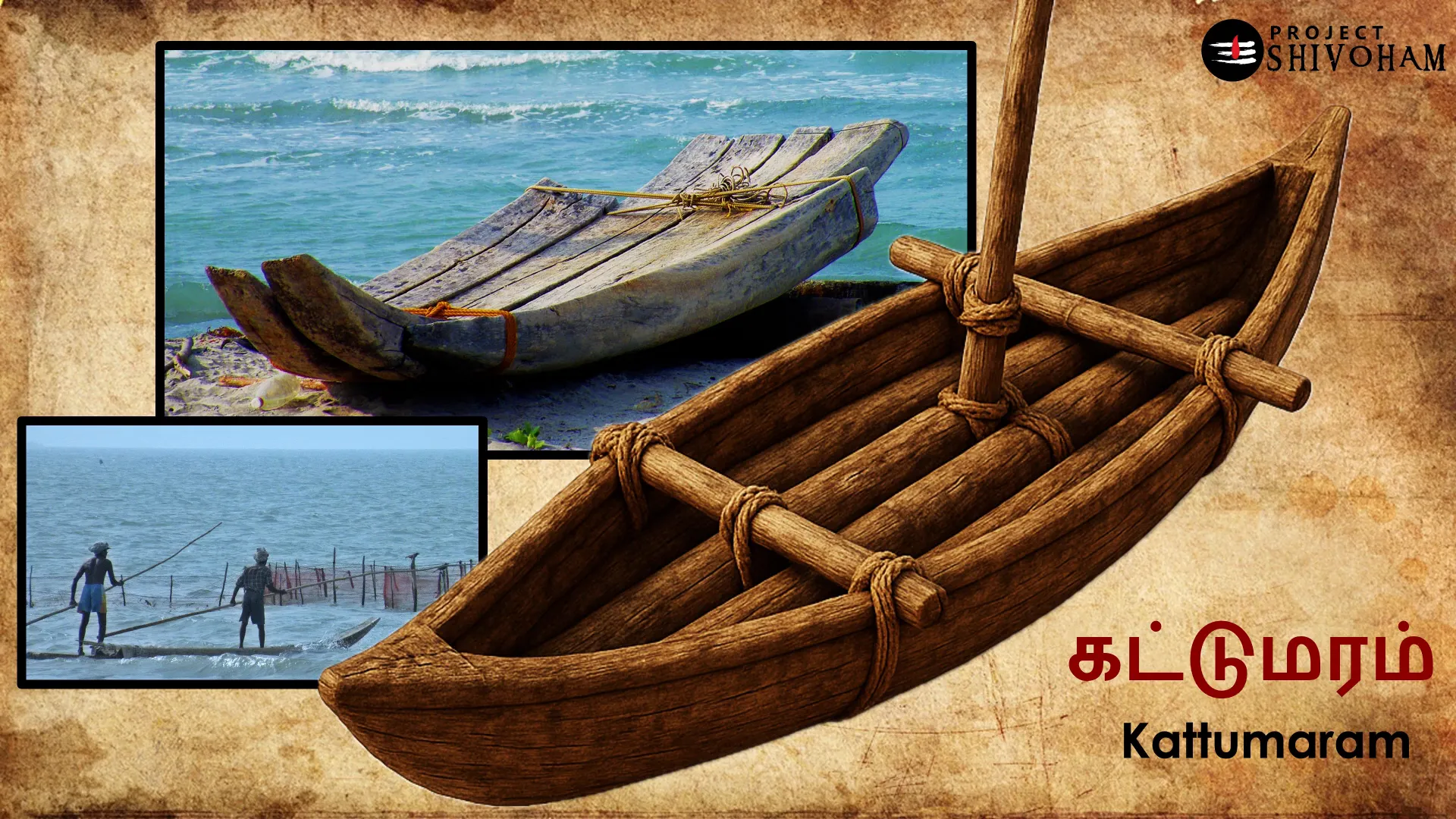
Conclusion
The story of Indian shipbuilding is one of resilience, innovation, and a profound connection to the sea. From the archaeological evidence to ancient scriptures and techniques, India’s maritime history is rich and varied. While colonial rule sought to erase this legacy, the revival of traditional shipbuilding practices through initiatives like INSV Kaundinya signifies a renaissance of India’s maritime heritage.
FAQs
What is the significance of the Passy Canoy?
The Passy Canoy is considered the oldest known boat in the world, dating back over ten thousand years, and illustrates early human navigation skills.
What were the major contributions of the Chola dynasty to maritime history?
The Chola dynasty constructed ocean-class ships and maintained trade routes with Southeast Asia, asserting dominance in the Indian Ocean.
What led to the decline of Indian shipbuilding during colonial rule?
The decline was caused by restrictive laws and regulations imposed by the British, which systematically dismantled indigenous shipbuilding industries.
What is the INSV Kaundinya?
The INSV Kaundinya is a modern vessel constructed using ancient stitching techniques, marking a revival of traditional shipbuilding in India.
What are stitch ships?
Stitch ships are ancient Indian vessels built without metal nails, using coiled rope to bind wooden planks, allowing for flexibility and durability.
This article was created from the video The History of Ship-Building with the help of AI. Thanks to Aravind Markandeya, Project Shivoham.